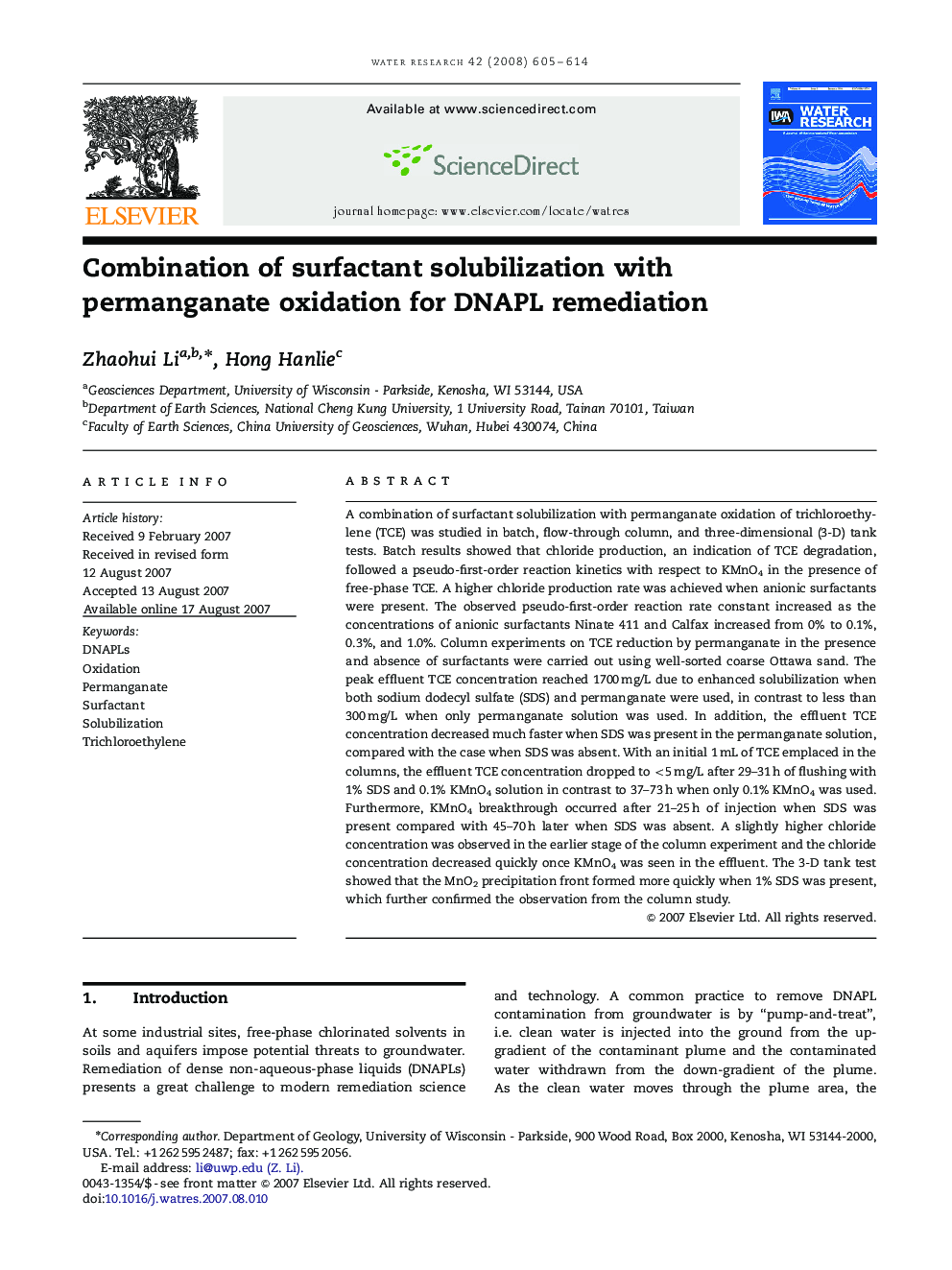| کد مقاله | کد نشریه | سال انتشار | مقاله انگلیسی | نسخه تمام متن |
|---|---|---|---|---|
| 4485210 | 1316944 | 2008 | 10 صفحه PDF | دانلود رایگان |

A combination of surfactant solubilization with permanganate oxidation of trichloroethylene (TCE) was studied in batch, flow-through column, and three-dimensional (3-D) tank tests. Batch results showed that chloride production, an indication of TCE degradation, followed a pseudo-first-order reaction kinetics with respect to KMnO4 in the presence of free-phase TCE. A higher chloride production rate was achieved when anionic surfactants were present. The observed pseudo-first-order reaction rate constant increased as the concentrations of anionic surfactants Ninate 411 and Calfax increased from 0% to 0.1%, 0.3%, and 1.0%. Column experiments on TCE reduction by permanganate in the presence and absence of surfactants were carried out using well-sorted coarse Ottawa sand. The peak effluent TCE concentration reached 1700 mg/L due to enhanced solubilization when both sodium dodecyl sulfate (SDS) and permanganate were used, in contrast to less than 300 mg/L when only permanganate solution was used. In addition, the effluent TCE concentration decreased much faster when SDS was present in the permanganate solution, compared with the case when SDS was absent. With an initial 1 mL of TCE emplaced in the columns, the effluent TCE concentration dropped to <5 mg/L after 29–31 h of flushing with 1% SDS and 0.1% KMnO4 solution in contrast to 37–73 h when only 0.1% KMnO4 was used. Furthermore, KMnO4 breakthrough occurred after 21–25 h of injection when SDS was present compared with 45–70 h later when SDS was absent. A slightly higher chloride concentration was observed in the earlier stage of the column experiment and the chloride concentration decreased quickly once KMnO4 was seen in the effluent. The 3-D tank test showed that the MnO2 precipitation front formed more quickly when 1% SDS was present, which further confirmed the observation from the column study.
Journal: Water Research - Volume 42, Issue 3, February 2008, Pages 605–614